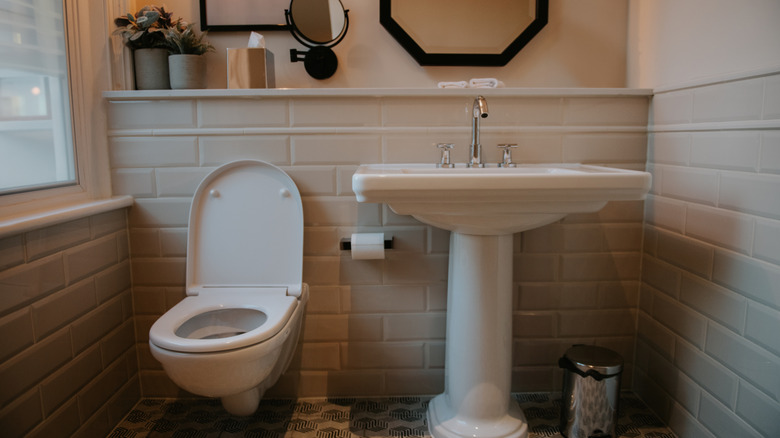The Pretty Plant That'll Thrive In Your Bathroom (& Other Humid Areas Of Your Home)
There's no shortage of great houseplants that can add greenery to your home. However, some work better than others in certain areas of the house. If you're looking for a great plant for the bathroom, you probably need one that thrives on humidity. Since the bathroom is a place where a lot of moisture is present, this is an ideal location for many such plants. You could also consider the kitchen and laundry room.
While there are many great indoor plants that love humid conditions, one of the best to grow is the arrowhead plant (Syngonium podophyllum). This plant loves humidity and tends to grow very well in the bathroom and other humid areas of the home. Consider growing one of these if you want to use plants to turn your bathroom into an oasis and add a bit more greenery to your home.
When growing an arrowhead plant in your home, you'll want to ensure the conditions are right. First off, use a potting mix that drains well. The pot should have drainage holes. If you'd like, you can also grow the plant in a hanging basket or have it climb a trellis or similar vertical object. You'll want to water the arrowhead plant just enough — don't overwater it or it could lead to root rot. Make sure it gets humidity of higher than 40%. If the arrowhead plant is not in a humid location, mist it every day, especially during the winter months. You can use an organic fertilizer on the plant once a month, although it's not necessary during the winter.
Other things to keep in mind for your arrowhead plant
In addition to ample amounts of humidity, the arrowhead plant prefers certain light conditions. Moderate or bright indirect light is best, but it can also grow in low-light conditions as well, so it might be okay if you don't have any windows. Avoid direct sunlight since this can scorch the plant's leaves. The temperature of the plant should stay between 65 to 80 degrees Fahrenheit during the daytime hours and remain more than 60 degrees Fahrenheit at night. If needed, you can prune the plant, but do it between the spring and late summer for best results.
While arrowhead plants aren't too fussy, there are a few setbacks to avoid and some important things to be aware of. For one thing, you'll want to watch out for pests. Arrowhead plants can be damaged by the same bugs that other indoor plants can fall victim to. Aphids, spider mites, mealy bugs, thrips, and fungus gnats can all damage your plant, so watch out for these and take steps to prevent them. You could use an organic pesticide to protect against the common bugs found on houseplants.
You should also watch for fungal diseases and root rot. Inspect for health problems such as yellowed, brown, and curling leaves. Over and under-watering are common culprits of these problems, so give your arrowhead plants the correct amount of water. Be sure to inspect your plants regularly and ensure good air circulation to keep your arrowhead plants as healthy as possible, whether you place them in the bathroom or elsewhere in your home.
